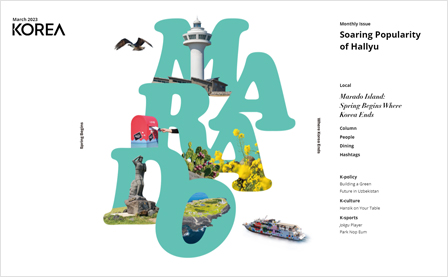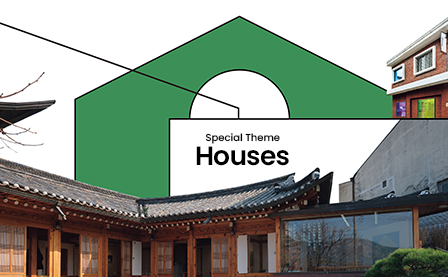May 2023

Local
Dining
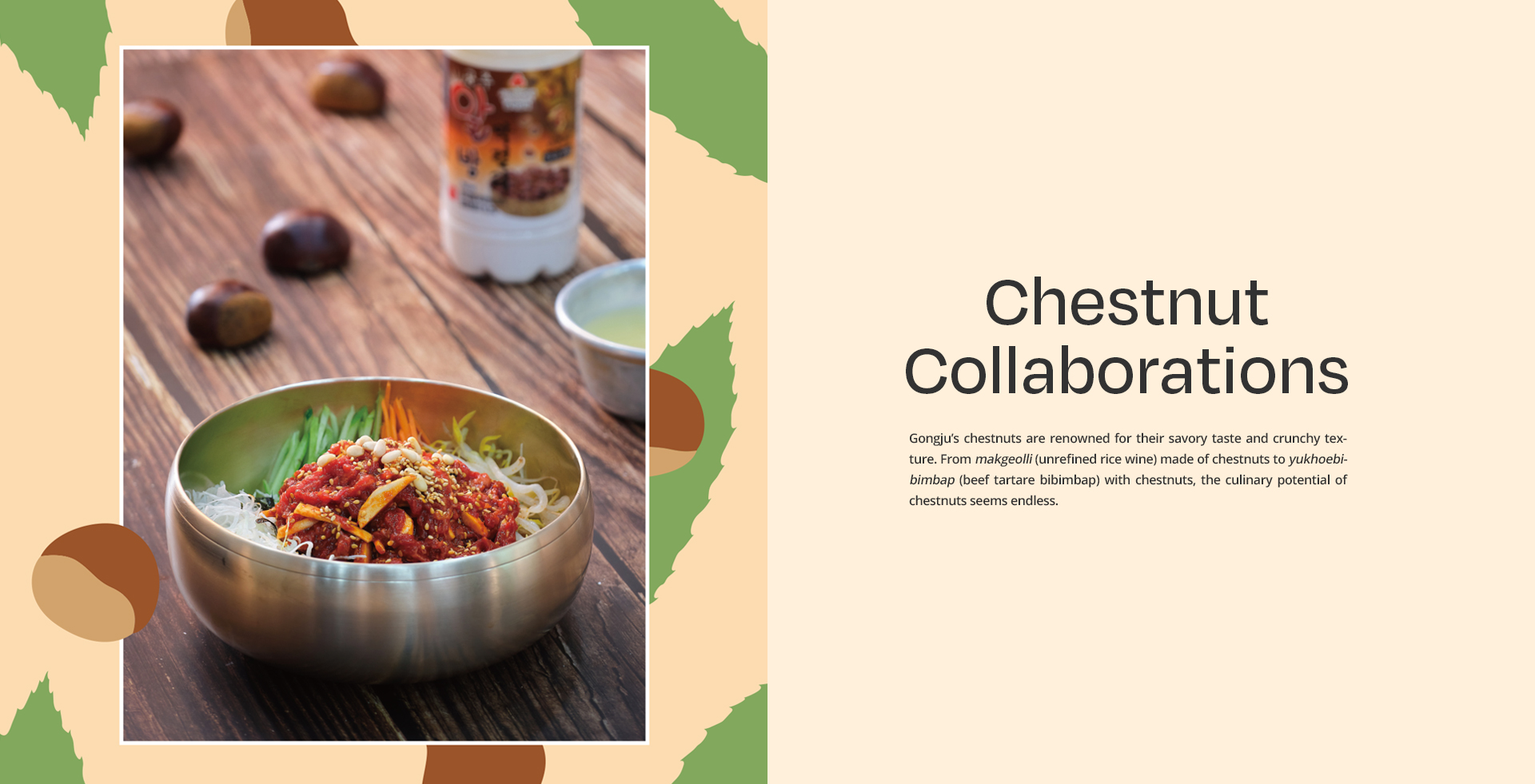
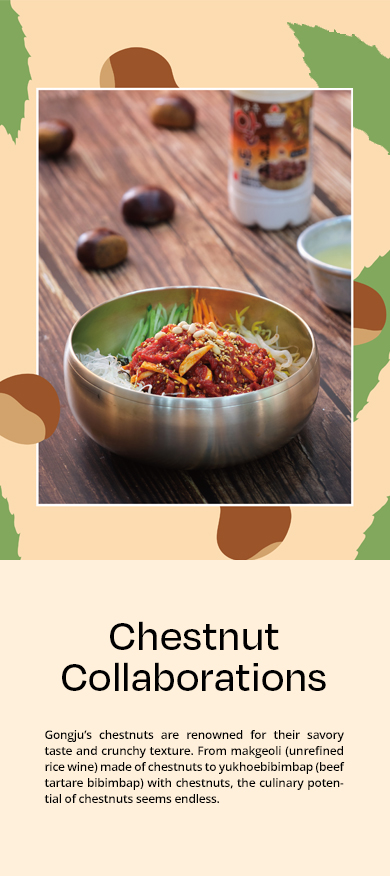
Endless Possibilities
Chestnuts in Gongju are a historic specialty with a history of about 2,000 years. Gongju's chestnuts are especially famous because they are thick and sweet. This is due to the large daily temperature difference as the topography of Gongju consists of mountain ranges. Gongju produces 8,000 tons of chestnuts every year, which accounts for 17% of Korea’s chestnut production.
Gongju’s chestnuts continue to be popular today, thanks not only to their excellent taste but also to the continuous research and development of new and creative dishes by the local chestnut research team. When chestnuts are in season, many cafes in Gongju offer drinks and pastries made with chestnuts, such as chestnut pie with chestnut sediment or chapssaltteok (sweet rice cake with red bean filling) with whole chestnuts, which are popular souvenirs for visitors.
If you look for even more unique souvenir, you should try Gongju Chestnut Makgeolli. Unlike regular makgeolli, which has a sour and carbonated taste, Gongju Chestnut Makgeolli has less carbonation and is nutty and smooth, making it easy to drink even for those who do not enjoy drinking makgeolli. Also, it pairs well with other foods.
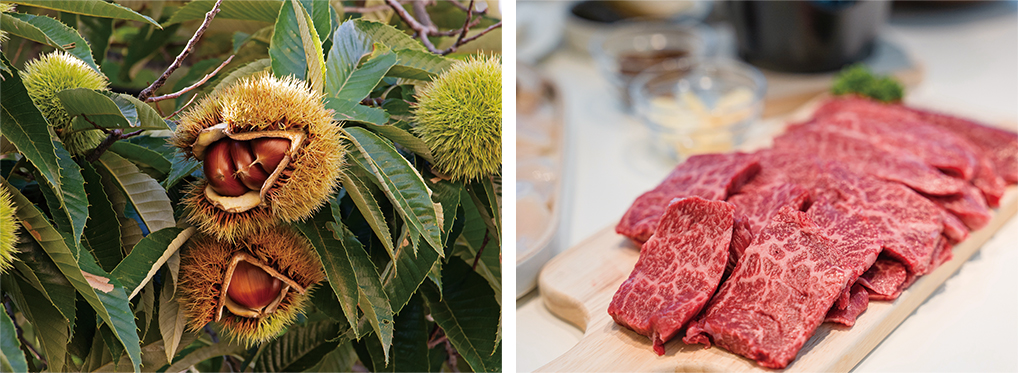
(Left) Gongju’s chestnuts are famous for their savory taste. © TongRo Image
(Right) Gongju’s specialty, ‘Albam (chestnut) Hanwoo,’ is made with beef fed with chestnut shells. © Gettyimages Korea
Meat Meets Chestnut
Even the chestnut shells are utilized in Gongju, as the city produces beef feed using chestnut shells and pulp. Hanwoo (Korean beef) raised on this feed is known as Gongju Albam (chestnut) Hanwoo.
There are many restaurants in Gongju where you can enjoy Gongju Albam Hanwoo, but if you’re looking for the best, Sijang Jeongyook Restaurant is the place to go. Their signature dish is yukhoebibimbap, which consists of perilla leaves, bean sprouts, green onions, gim (laver), carrots and cucumbers served in yugi (brassware). The dish is topped with a scoop of yukhoe (beef tartare) and can be customized with sesame oil and special gochujang (red pepper paste sauce).
Although it may seem like a regular yukhoebibimbap, the addition of crunchy raw chestnuts to the raw meat creates a unique and delightful texture. While raw chestnuts and meat may not seem like an obvious pairing, their textures blend together perfectly.
At Sijang Jeongyook Restaurant, they don’t use pre-peeled chestnuts, which can lose their crunchiness during the washing process. Instead, they meticulously trim fresh chestnuts every day to ensure that the dish maintains its perfect texture. This commitment to quality is perhaps the secret to their mouthwatering food.
If you visit Gongju, be sure to try the various dishes made with chestnuts. You may be surprised by the unexpected flavor combinations.
 (Left) The soft texture of yukhoe (beef tartare) and crunchy chestnuts blend perfectly together. (Right) Beginner-friendly chestnut makgeolli with low carbonation. © TongRo Image
(Left) The soft texture of yukhoe (beef tartare) and crunchy chestnuts blend perfectly together. (Right) Beginner-friendly chestnut makgeolli with low carbonation. © TongRo Image View of all
View of all
